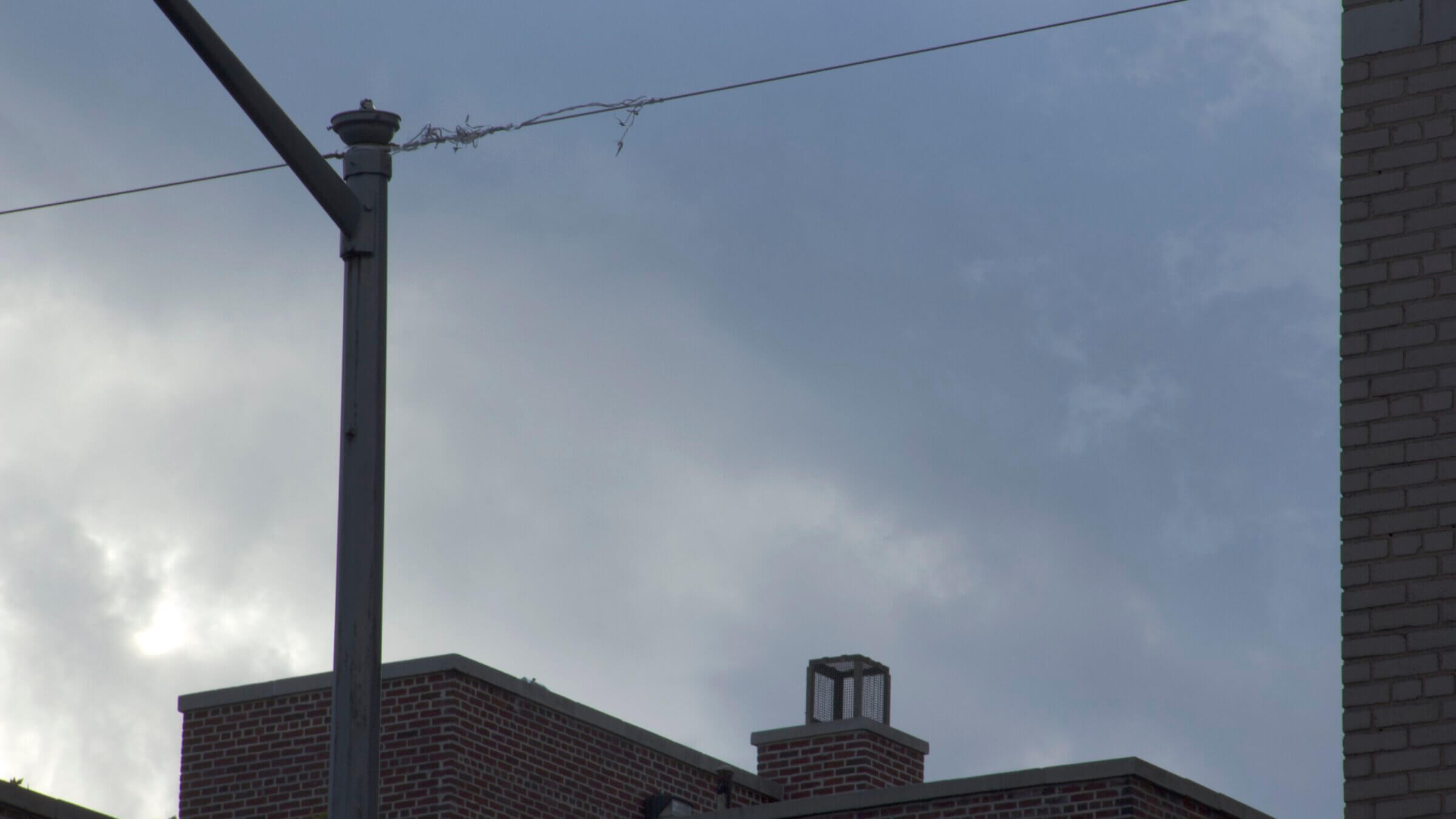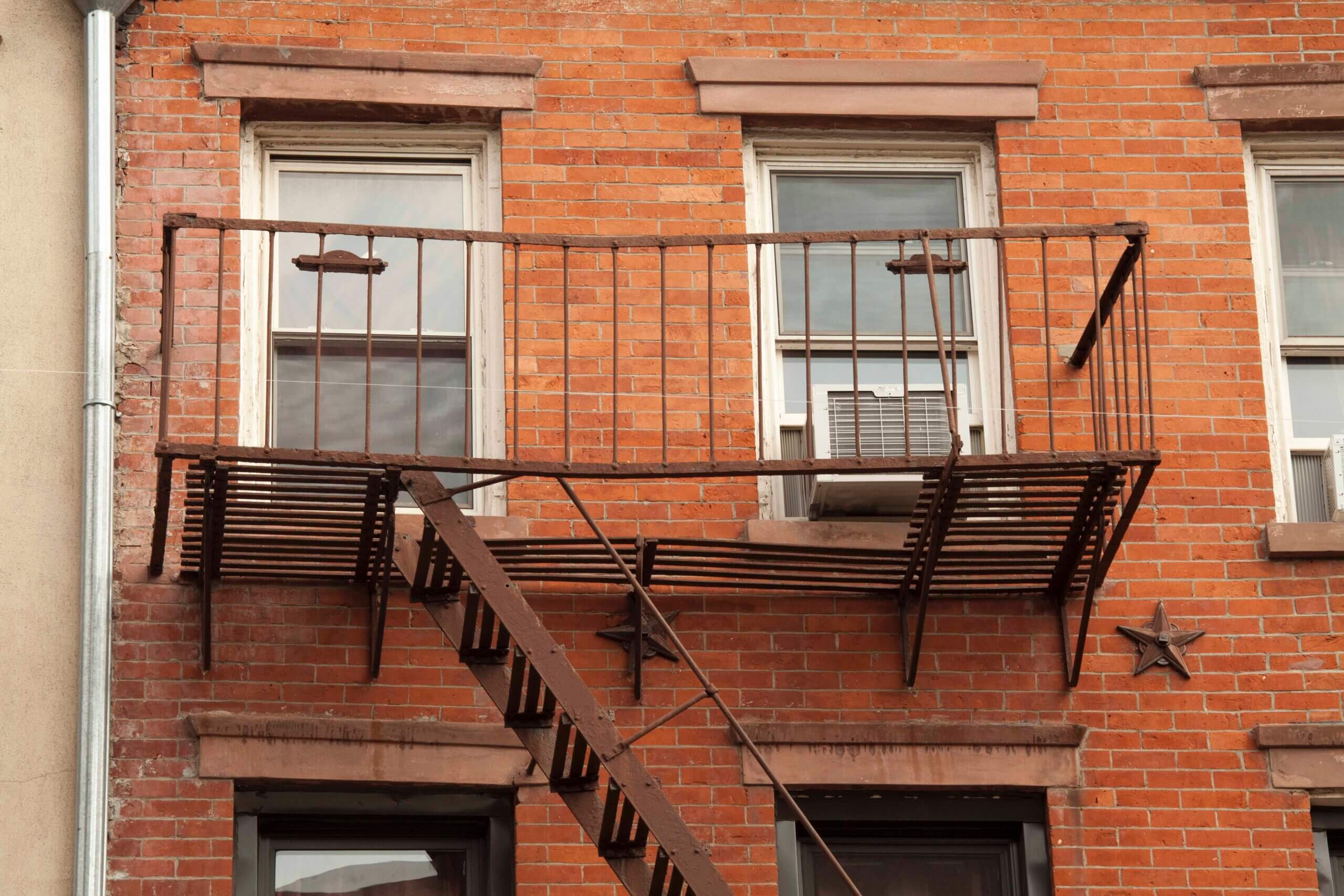How America’s most Jewish city is also its most Catholic, Protestant and Muslim
In the exhibit City of Faith, different religious groups intersect and interact in New York

A photograph of an eruv by Margaret Olin shows just one of many ways a neighborhood can be visibly Jewish. Courtesy of Museum of the City of New York
Through a multitude of maps, photographs, historical documents and contemporary art objects, a new exhibit at the Museum of the City of New York celebrates the city’s religious diversity while also documenting the faith-based prejudice and intolerance that persists in forms ranging from subtle-seeming slights to overt hate speech to brutal violence.
City of Faith: Religion, Activism and Urban Space does not shy away from the ways in which religious groups — Jews, Catholics, Protestants, Muslims, Sikhs and others — rub elbows with each other, not always without friction, both in private and in public. On a more positive note, the exhibit also showcases the ways in which these different groups can and do work together to foster acceptance and justice in realms both secular and faith-based.
Jam-packed from floor to ceiling with eye-catching graphics, provocative art works and explanatory texts, this timely exhibit can at first seem as dizzying as a busy urban intersection. But in keeping with its theme, the show demonstrates that even within the frenzied secular space where so many of us live, there are also ways to make space for the spiritual.
Sometimes you cannot even detect where one realm ends and the other begins, an introductory wall text suggests: “In Harlem — originally a Lenape village and later a Dutch colony, an immigrant enclave, and eventually a Black Mecca — religious and secular phenomena alike can be considered ‘sacred.’”

Soundscapes and ‘scent-scapes’
Photos of delis in Jewish neighborhoods and men and women in ordinary business dress also marked by ash on their foreheads in observance of Ash Wednesday shows how the secular and the spiritual coexist.
The spiritual can create its own soundscape — calls to prayer, the blowing of the shofar, Gospel hymns, the lilt of a holy language — and even its scent-scape. A subtly woody aroma emanates from a three-dimensional hanging sculpture, created by the artist Tanaïs, made up of twine strung like a music staff and dotted with music-note-like braids of Nepali lotka paper.
Each of these “notes” is dipped in bright colored paint and scented with a powdered mix of musk, frankincense, sandalwood, and rose; the arrangement across the musical staff can be read as the theme of jazz composer John Coltrane’s classic composition, “A Love Supreme,” which exhibit curator Azra Dawood explains can also be interpreted as words of praise of the divine, in the phrase “Alhamdullilah.”
Potential targets for hate
At a time of resurgent acts of hatred and antisemitism, the exhibit is resonant on many levels. It is most effective in demonstrating how visual and sensory markers of religious groups — whether clothing (Jewish skull caps, Sikh turbans, Muslim burkas), language (Yiddish, Hebrew, Urdu, Arabic and Bengali), or kitchen aromas — can make people hyper-visible and thus a potential target for religious profiling.
Religious discrimination is hardly new. But Dawood, an architectural historian, provides historical context for the practice of what she describes as the “normalization” of Protestantism as the city’s dominant religious group. It is against that backdrop, the exhibit demonstrates, that over time, each newly arriving immigrant religious group has had to organize and protest in order to create and claim space for its members.
Until waves of Irish immigrants began arriving in New York in the mid-19th century, relatively few Catholics resided there. The city’s anti-Catholic and anti-Irish immigrant prejudice was reinforced by a public school curriculum that reflected the Protestant majority in its mandatory use of the King James Bible to teach reading and religion. Viewing this as an attempt to indoctrinate Catholics in Protestant tradition, the Catholic community created its own parochial school system.

The eruv
At the start of the 20th century, Jews also created space for themselves with the erection of an eruv, a boundary marking off areas in which observant Jews are allowed to perform activities, such as carrying objects outside the home, that are normally prohibited on Shabbat.
“Entire religious ecosystems can be tethered to the built environment in barely perceptible ways, as when Orthodox Jewish communities employ the Talmudic concept of the eruv,” the wall text explains, beside a 1907 map depicting the Manhattan eruv, which designated the entire eastern side of Manhattan as part of the enclosure.
In secular, urban settings, such as New York, the eruv is designed to be discreet, composed of thin string or wire hanging above the ground, connected via utility poles or elevated train tracks, as shown in more recent photographs and a slide show of the making of an eruv. But no matter the relative invisibility of the eruv, as any number of recent community disputes demonstrate, its very presence continues to stir conflict, controversy and religion-based prejudice against Orthodox Jews, sometimes even from secular Jews.
By contrast, another map, displayed nearby, proudly — and humorously — claims a widespread Jewish presence in New York. “What Is a Jew? From Emma Goldman to Goldman Sachs,” which originally appeared in Nonstop Metropolis, edited by Rebecca Solnit and Joshua Jelly Schapiro, details any and every historic site, building, gravesite, synagogue, hospital, nonprofit or communal organization or other entity that could be related to Jewish history. What can one say, except L’Chaim!
Still, there is plenty for all of us do, the exhibit suggests, in terms of activism, mutual solidarity and support with other religious groups. That message comes through clearly in the exhibit’s photographs of religious groups and communities — Sikhs, Muslims, Jews, Christians, and others — banding together to protest the murder of George Floyd, the 2017 Muslim travel ban, antisemitic attacks, and other hate- and race-based crimes. Perhaps the faith most needed to sustain us is that we can, indeed, find ways to work together in the space, and in the world, we all share.























